The classic consumerism approach has been long out-of-date. Nowadays, sales are about so much more than just forcing a product to someone to buy, it’s all about offering customers the perfect solution for their problem and truly solving said issues.
It’s no secret that personalizing your email content can result in higher open rates. However, many marketers struggle with how to add that personal touch without taking up too much of their already limited time.
In this blog post, we’ll outline six simple ways to improve your email personalization and boost your open rates.
Before sending your cold email outreach or LinkedIn Inmails, make sure it is structured correctly and that you’re using the right platform.
The Basics of Cold Outreach for LinkedIn Prospects
When writing an email or LinkedIn message, it’s important to take into account your prospect’s personal pain points. This can make them feel cared for and motivated to take action.
There are 3 primary parts to any message, including the hook, body, and CTA.
- The hook is what grabs someone’s attention;
- the body contains all of the important information about your message; and finally,
- the CTA asks people what they should do next.
Cold Outreach Personalization: Adding Variables
You can create personalized outreach messages for your prospects with the aid of sales engagement tools. With the help of these tools, you can tailor your messages to each recipient in order to better connect with them.
You can make your message more likely to be read and responded to by personalizing it for each recipient by using placeholders or variables.
There are a few different types of placeholder text that can be used for various purposes, such as when you’re preparing for a sales engagement or when you’re putting them manually. However, each type has its own unique execution style.
Custom Variables are a special type of variable that you can create and import into Demand.Cloud. They allow you to specify the purpose of the variable yourself, rather than relying on Demand.Cloud’s default settings.
Custom variables are a valuable tool for data analysis and reporting. They can be used in sales engagements to track key data points, or inserted manually into reports.
Two types of information are used to comprehend a company: firmographics and demographics. Age, gender, and location are just a few examples of demographic information.
Company name, size, performance, and executive titles are all examples of firmographic information.
The classification of prospects’ feelings, values, attitudes, and interests is known as psychographics.
Without further ado, here are the 6 Ways to Improve Your Email Personalization and Boost Your Open Rate in the process.
1. Prospects’ Unique Content
You’ve probably never admitted it, but there's a certain level of liking towards someone when they’re interested in what you're thinking. That is why the first kind of placeholders that need to be considered are content creators - people who make their own things and put them out into public for others to see! When looking at LinkedIn profiles or company websites as examples of how this works (especially if those sites include any kind of creative work), watch closely because most will have links within or either under the "about" section details like hosted webinars, and published articles. In order to get people interested in what you have available, it's important that the introduction hooks them and offers some value. You can do this by choosing a type of creation for your company or product line as well as highlighting how these services will meet their needs.


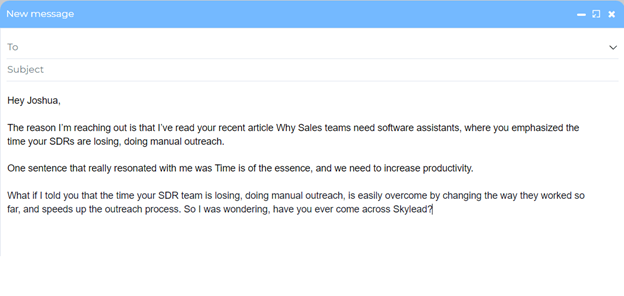

2. Content That Prospects Interacted With
The way you show your interest in someone is by engaging with what they are doing. If a person likes or shares something on LinkedIn without creating their own content, use that as an advantage to talk about something related back at work; like how great this post was. You can also go even deeper and find out more information from webinars/events attended. The key here isn't sounding too salesy. Webinars should always have some type of value so make sure whatever action takes place during listening doesn’t feel forced.


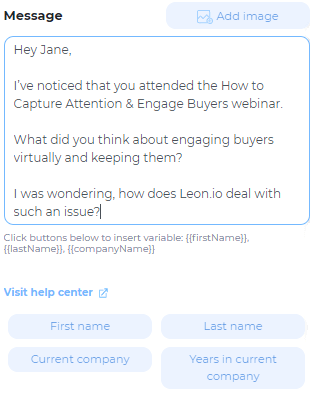

3. Using the Self-Ascribed Characteristics of Prospects
Prospects typically list short sentences about themselves on their LinkedIn profile, which gives you an idea of the things that they are passionate about and skilled at. Additionally, this information is easily found on their Profile line, Headline, and Company description. The company will communicate its values and interests to the world, which can help you target your product or service to those interested.
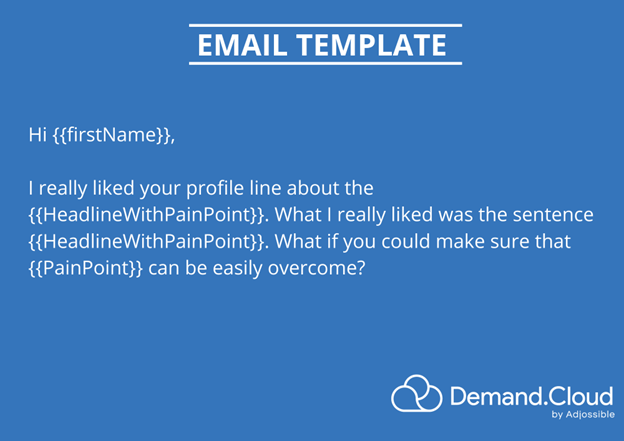



4. Background Information of the Prospects
You might want to look a little bit deeper, just like a private investigator, if you can't find any of the aforementioned hooks. Find out, for instance, which schools they attended as well as their interests and hobbies.
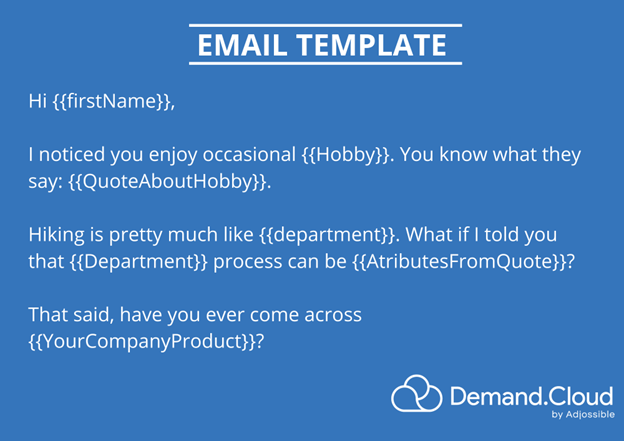



5. Company Information
The personalization placeholders are categorized as firmographics. These include information such as Merger and Acquisition information, Growth information, Website language, and hiring. Some of the variables that are least effective in motivating employees are nonetheless important to mention. If you mention one specific variable regarding their company, the more they’ll feel special and appreciated. It is important to be as clear as possible when writing about your research, but it is also important to keep the character length within reasonable bounds.




6. Personalized Introduction
Consider using one variable if you feel that the previous one went a little further than you were willing to go, if you need help with ideas but do not want to change the remainder of your email or LinkedIn message for everyone. By doing this, the prospect-specific introduction will differ from the rest of your email or LinkedIn message.
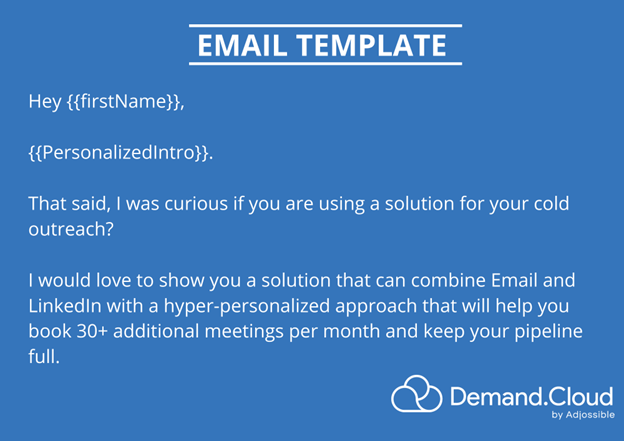



Extra Variables
Some extra placeholder ideas that you can utilize to personalize are gender, age, interests, and personality traits.
- Team Member Name is a good way to create familiarity with the leads’ colleagues.
- Sales Pitch According To The Industry – You can tailor your message to the industry of your prospect, based on their primary pain points and values. For example, in the technology industry, prospects may be concerned with security and privacy issues. Tailor your pitch accordingly.
- Birthday Date– If your LinkedIn profile states that someone’s birthday is on a certain date, you can use this information to organize a special gift or greeting for them before their birthday.
Increase The Cold Outreach’s Effectiveness With Additional Personalization
Personalized images and GIFs can be powerful tools for cold outreach, but they are not used as often as they should be. When you send them, you will gain a higher response rate than if you don’t use them.
A great way to stand out from other emails and get in touch with a prospect directly is to tailor the buying process to their profile image.
Demand.Cloud likes to personalize native GIFs and images with prospects’ profile pictures or businesses’ logos. Your chances of closing the sale will increase thanks to this extra, original personalization that will help you connect with the lead.
Conclusion
Email personalization is one of the best ways to increase your open rates, and there are a number of different ways to do it. In this blog post, we’ve covered six different methods for personalizing your emails that will help you reach more prospects and get them interested in what you have to offer.
But if all of this sounds daunting or like too much work (or if you just want someone else to take care of it for you), don’t worry – Demand.Cloud has your back! We offer personalized email marketing that helps you to connect with more leads quickly and easily.
Ready to see how our platform can help improve your email open rates? Get a Demo Now!
